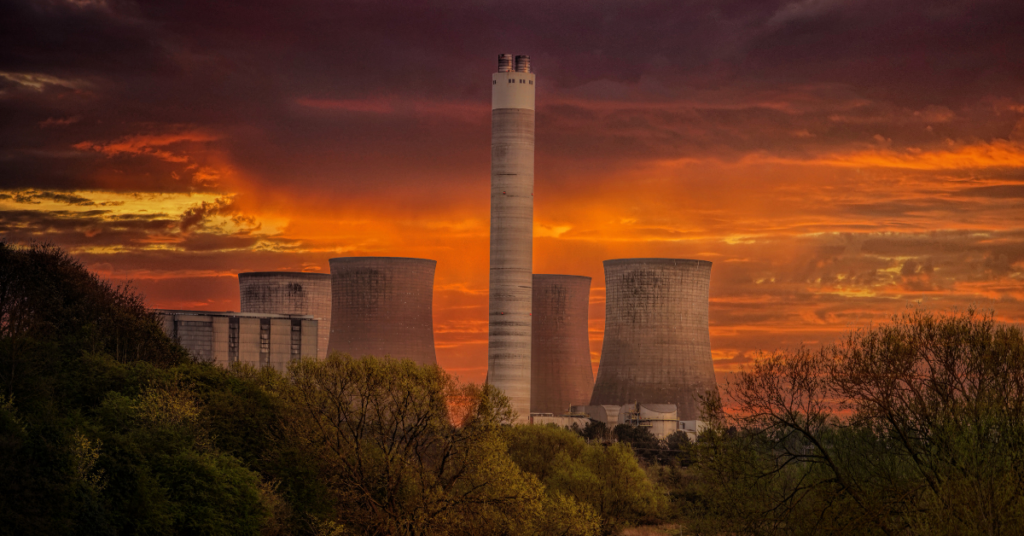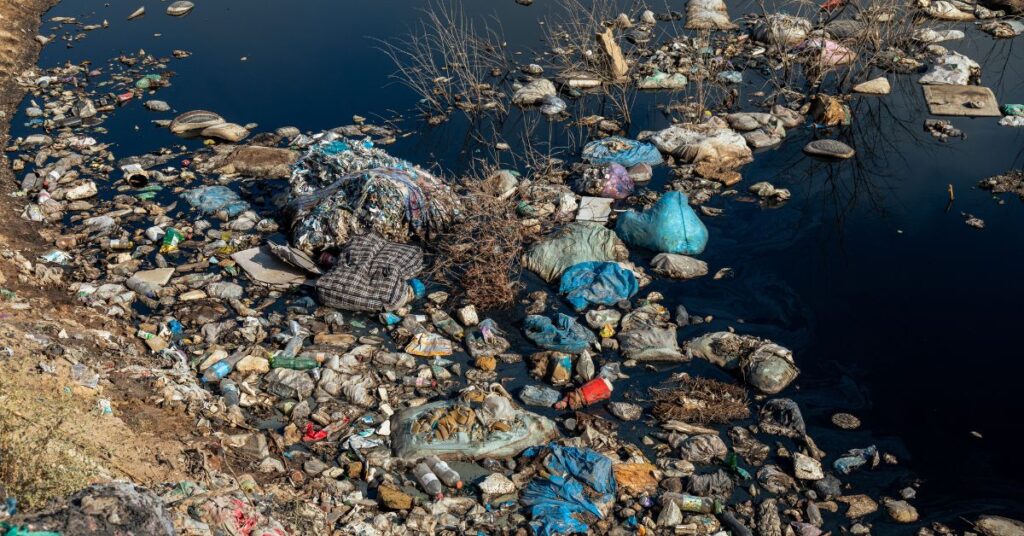
100 Nuclear Energy Facts
Here are 100 nuclear energy facts for students:
1) The Obninsk Power Plant in the former Soviet Union is the first power plant to use nuclear energy for industrial electricity production in 1954.
2) Since nuclear energy is self-sufficient and doesn’t need any external sources like coal and gas, it is not subjected to price fluctuation, unlike other energy sources. in terms of economic value, nuclear energy is extremely cheap.
3) Nuclear waste is recyclable.
4) The United States alone consumes more than 30% of the world’s nuclear energy.
5) Nuclear energy doesn’t emit any greenhouse gas like CO2. Therefore, it is a reliable source of energy and can be used in the future as an alternative to fossil fuels like coal.
6) When atoms split apart, electricity is produced in nuclear energy plants.
7) Uranium is the core material used in the atom-splitting process known as nuclear fission.
8) Around 2007, China intended to build more than 30 reactors in the next 15 years to fulfill its high demand for electricity, driven by its desire to improve its economic growth.
9) Nuclear power plants in the United States generate 790 billion kW hours of electricity in 2020 and for the first time, surpassing the amount of electricity produced from burning coal.
10) Since nuclear power can be generated at any time of the day, the power plant can produce energy continuously.
11) The closing of the Vermont Yankee Nuclear Plant results in an increase of 650,000-ton carbon emissions within the next two months.
12) A study by NASA and Columbia University found that if given the chance, nuclear power could have saved 1.8 million lives been lost to pollution from emissions across the world.
13) Unlike hydropower plants, nuclear power plants need only 1.3 square miles to produce more than enough electricity to power 750,000 homes.
14) There are 2 ways for the generation of nuclear energy – fission and fusion.
15) In the decade following World War II, hydrogen bombs/ thermonuclear weapons were first developed by harnessing nuclear energy.
16) Nuclear reactors are designed and structured in such a way that they can handle extreme natural events like hurricanes.
17) It was in the 1950s that the first commercial nuclear power stations started their operation.
18) About 10% of the world’s electricity comes from nuclear energy.
19) More than 50 countries are utilizing nuclear energy in 220 research reactors.
20) Nuclear technology was first developed in the 1940s, initially focused on producing bombs.
21) It was in the 1950s that nuclear energy was directed towards peaceful use of nuclear fission, like for power generation.
22) Nuclear technology uses energy through the process of fission to control the spread of disease by diagnosis & treatment.
23) According to OECD IEA, nuclear electricity generation will increase by around 55% by 2040, and capacity will grow to 599 GWe.
24) Reactors like PWR and BWR are two of the most common technologies used for nuclear energy generation.
25) Out of 440 reactors that are operational, 95 are in the U.S. making the United States a major player in the geopolitical market of nuclear energy.
26) In response to the disastrous accidents at Three Mile Island and Chernobyl Institute of Nuclear Power Operations (INPO) has been established by the industry to promote mastery and competency in operator training & plant management and operation.
27) The entire nuclear fuel that is used to generate electricity in the last 50 odd years can be filled in a football field quite easily.
28) 96 percent of nuclear waste can be recycled.
28) Naturally occurring radiation exists in our environment, therefore we are more or less always exposed to radiation.
29) As per the studies, nuclear radiation constitutes only 0.005% of the USA’s overall annual radiation which is again 100 times less radiation than we get from coal and 200 times less from a cross-country flight.
30) The production cost of nuclear energy is lower than that of coal or natural gas. That is why the price of electricity coming from nuclear energy is cheap.
31) With more advancement in the nuclear power plant industry, the average cost of electricity production costs has declined i.e. more than 30% in the past 10 years including the cost of operation and maintenance of the plant, etc.
32) Idaho with a population of 1,000 was the first town in the US to be powered by nuclear energy.
33) Nuclear energy has a little environmental impact because of its clean air electricity source. i.e. a 1,000-MW wind farm occupies 78sq miles whereas a nuclear plant of the same capacity will occupy less than 5% of that area.
34) The weight of nuclear waste is so less that it makes a negligible impact on the environment. If a 70-year lifespan of an individual’s electricity needs was supplied by nuclear energy, that 70 years’ worth of nuclear waste will weigh just around 2 pounds, which could fit into a soda can.
35) Nuclear fuel needed for energy generation is extremely dense.
1 uranium pellet (1 inch tall) = 17000 cubic ft of natural gas + 120 gallons of oil+ 1 ton of coal
36) In 1977, nuclear reprocessing was forbidden by Jimmy Carter.
37) Unlike low-level radioactive wastes (account for 90% radioactive waste) that are generally used high-level radioactive wastes of nuclear energy generated as a by-product of the reactions occurring inside nuclear reactors can take 100 of 1000 years to decay and then may become harmless to masses.
38) To deal with the high-level radioactive waste carefully, nuclear operators cool these specific wastes in storage pools for up to 10 years, and then they are boxed in containers and transported to permanent storage sites in order to reduce the heat and contain the radioactivity.
39) The Three Mile Island accident in 1979 took 14 years to clean up the waste completely.
40) During a nuclear disaster if a person somehow gets exposed to radiation then the first thing to do is remove the cloth one is wearing since 90% of the radiation is settled on the clothing.
41) An uncontrolled fission reaction could expose the destructive power of a nuclear bomb.
42) A high level of technology is necessary for building nuclear reactors.
43) Since uranium or plutonium is a rare metal and hence expensive, that is why countries that have signed Nuclear Non-Proliferation Treaty (NPT) get these kinds of materials. This is why most nuclear power plants are situated in developed countries.
44) According to studies, storage facilities for radioactive waste from energy production have the possibility of getting leaked, may crack, or erode. And therefore, could contaminate the soil and groundwater near the power plant. Such unfortunate incidents may lead to serious health problems for both humans and organisms.
45) In 1986 Chernobyl, Ukraine, due to the accident the pine forest within a km was dead. Cattle, horses died. Long-term diseases like cancer, blindness started to appear as a result of radioactive poisoning.
46) Nuclear power plants are extremely expensive to build. From 2002 to 2008 the total estimated cost for construction rose from $2-$4 billion to $9 billion.
47) Destruction of nuclear waste is not possible.
48) Nuclear plants need to be constructed near any source of water for cooling, and practically few locations across the globe are safe from natural calamities or potential disasters that may trigger a nuclear accident. Therefore, this makes it difficult to increase the number of nuclear plants across the world.
49)
A world more reliant on nuclear power would involve many plants in countries that have little experience with nuclear energy, no regulatory background in the field and some questionable records on quality control, safety, and corruption
Dr. Peter Bradford
50) Nuclear power plants can also be called thermal plants. Because it uses the heat produced by nuclear fission to convert water into high-pressure steam so that the steam can drive the turbine generator to generate electricity.
51) Each year it is estimated that U.S. nuclear power plants eliminate the release of about 1 million tons of nitrogen oxides and 2.7 million tons of sulfur dioxide that is pollutants controlled under the Clean Air Act.
52) There are too many reactor designs and plans. Therefore, training of safety personnel and plant employees becomes more and more difficult and emergency response starts to vary depending upon the building of the power plant.
53) Kazakhstan is the largest Uranium producing country in the world. The country produces 42% of the world’s Uranium supply.
54) The McArthur River in Canada is the world’s largest producing Uranium mine, which produces 13% of the world’s Uranium and is also known as the largest high-grade uranium deposit in the world.
55) The melting and boiling point of uranium is very high. Uranium melts at 1,132.3ᵒC and boils at about 3,818ᵒC.
56) Nuclear energy is also harnessed for radiation therapy to treat people suffering from cancers. In cancers, radiation is used to shrink the tumor & kill malignant cells.
57) Nuclear energy is also produced for preserving food.
58) Harmful organisms are destroyed without even cooking or changing the nutritional qualities of the food when food is exposed to radiation. This makes chemical preservatives, refrigeration unnecessary and therefore requires less energy for preservation unlike, other food preservatives.
59) A nuclear power plant needs to be shut down around every 2 years to get rid of its used uranium fuel which by then turns into radioactive waste.
60) In 1960 India started developing nuclear energy technology, including the design, construction, and operation of PHWR.
61) Since reprocessing of spent fuel is essential that is why India has built 3 reprocessing plants -Trombay, Tarapur & Kalpakkam.
62) Public acceptance of nuclear energy is very important for its future growth and therefore transparency in nuclear technology becomes necessary for boosting confidence among people.
63) High capital costs and interest rates and a longer time frame of construction of nuclear reactors need to be reduced to improve the present state of nuclear energy.
64) Since nuclear energy-generated electricity in India is not available at a subsidized rate, it is expensive.
65) In 2006, in Riyadh, Arab leaders of the Gulf Council came together to chart out a plan for a joint nuclear energy development program to reduce their dependence on conventional petroleum fuel.
66) The Indo–U.S. Civilian Nuclear Agreement has enabled India to conduct trade in civilian nuclear energy with NSG countries and sign nuclear agreements with countries like France, Russia, etc.
67) India intends to increase its nuclear energy generation capacity to 63,000 MWe by 2032.
68) In the second stage of India’s nuclear program, the development of a fast breeder reactor is very significant. India has low uranium reserves and therefore the used nuclear fuel from a normal nuclear reactor is reprocessed into plutonium & residual uranium which is again used in fast breeder reactors to generate electricity. This reprocessing leaves very little nuclear waste.
69) To meet the increasing demands of clean water, nuclear energy can be used to desalinate seawater.
70) Desalination power plants need high energy to turn seawater into usable water. And this high level of energy can be provided by nuclear power plants. Therefore, if desalination units are being installed in reactors near water bodies like the sea, not only drinking water could be produced but also could be used to replenish the groundwater, which will improve the ecosystem and increase the supply of drinking water.
71) Since 1954, as many as 667 nuclear reactors have been built worldwide,
72) The IAEA lays out 11 basic principles for running nuclear energy.
- Safety
- Security
- Responsibility
- Permission
- Continuous Control
- Compensation
- Sustainable Development
- Compliance
- Independence
- Transparency
- International Co-operation
73) In section 3 of the Atomic Energy Act of 1962, India doesn’t entertain any private players in the nuclear sector scenario and acts as a backbone for the overall nuclear energy regulatory mechanism.
74) However, in 2020 Nirmala Sitharaman made reforms in the nuclear sector whereby private players are being invited in this industry but only for consumer application of nuclear energy.
75) Nuclear-energy-powered spacecraft is the latest addition in this industry. The initiative has been taken by the US following the footstep of Jeff Bezos’s space venture.
76) Generation IV International Forum (GIF), under the guidance of the US Department of Energy, intends to pursue technological innovation, advance designing of reactors, new market opportunities to reduce costs, improve economics, increase thermal efficiency, to reduce the level of toxicity of radioactive waste, meet the goals of sustainability, etc
77) Environmental groups like Tasc claim that the construction of the Sizewell C nuclear plant could destroy marine life.
78) Evidence shows that 8 million fish were sucked into the cooling system of the existing plant Sizewell B between 2009 & 2013.
79) Nuclear power plants are also the source of largescale employment opportunities. The power plant at Indian Point has provided 1,000 jobs and also contributed half of the town’s tax revenue.
80) Hinkley Point C is UK’s first nuclear power plant that has been built in more than 20 years.
81) HL-2M Tokamak reactor in China known as the artificial sun is the most advanced nuclear fusion device. It is significant because this is the first device to test nuclear fusion for commercial production of electricity and second the chance of emission of radioactivity in the fusion reactions is much much lesser than that of the fission reaction.
82) Global Centre for Nuclear Energy Partnership (GCNEP) at Kheri Jasaur is the first world nuclear energy partnership center.
83) The 11th Nuclear Energy Conclave organized by the India Energy Forum in 2019 extends the use of nuclear energy to the treatment of municipal waste.
84) Akademik Lomonosov in Russia is the world’s first floating nuclear power plant, and it became operational in 2018.
85) Despite being the coveted mode of electricity production by nuclear energy, the fall in prices of wind and solar power has made a dent in the rate of nuclear energy production.
86) In 2019, the full completion rate of nuclear power plants decreased from 30 per annum to 4.
87) A small modular reactor is a recent addition to the reactor design for energy generation. Unlike general reactors, this form is much easier to build. And, there is less chance for the small modular reactor to melt or explode.
88) NuScale Power Module- the smallest light water reactor is one of the most convenient reactors that can be stored underground and also be not affected by natural calamities.
89) Until 2009, for 34 years since India was not under the Nuclear Non-Proliferation Treaty, the country was excluded from engaging in trade in nuclear plants and materials.
90) People living in close proximity to abandoned uranium mines are more exposed to uranium than the rest of the population. 85% of Diné (Navajo) people have more uranium in their body which made them suffer from cancer clusters and water contamination.
91) The industry of uranium production is volatile and unstable.
92) During nuclear plant accidents, radioactive iodine is the most immediate danger since it gets quickly accumulated in the thyroid gland, which leads to thyroid cancer and death. That is why the iodine pill is given first to nuclear accident victims.
93) In the US Illinois the largest producer of nuclear energy in succeeded by Pennsylvania and South Carolina.
94) Unlike in movies or series, radioactive waste doesn’t glow.
95)
Since we need to solve 80% of the climate and pollution problems by 2030, and 100%, ideally, by 2035, a new nuclear reactor that takes an average of 15 years between planning and operation is completely useless in terms of helping the climate problem
Jacobson
96) Generally, nuclear reactor lifespan is less but a nuclear reactor in Fukui Prefecture was again started after 40 years.
97) 35 years after the Chernobyl accident in Ukraine, fission reactions are smoking again in uranium fuel masses that are buried deep inside the reactor hall.
98) According to a researcher, there is no scientifically proven way of disposing of high and intermediate-level nuclear waste.
99) A study by Greenpeace has revealed that nuclear waste storage facilities in 7 countries are reaching a saturation level revealing a deep global crisis.
100) A balanced use and not over usage of nuclear energy can lead to sustainable development.
Editor’s Note
Nuclear energy is relatively sustainable, but it comes with a significant risk factor, making things much more complicated. Therefore, the regulating bodies and governments across the globe need to take calls carefully considering the worst possible scenarios.
What is your stand on this topic? Do you have any other nuclear energy facts that you want us to include here? Let us know in the comment section below.
#BleedGreen


I’m currently pursuing studies in the field of sociology. Being a research scholar, I intend to combine both theory and practice in order to produce resourceful research output. Believes in writing with less jargon and makes it available in a more accessible format.





Pingback: Developed VS Developing Countries: Decoding The Western Hypocrisy On Climate Change - BleedGreen